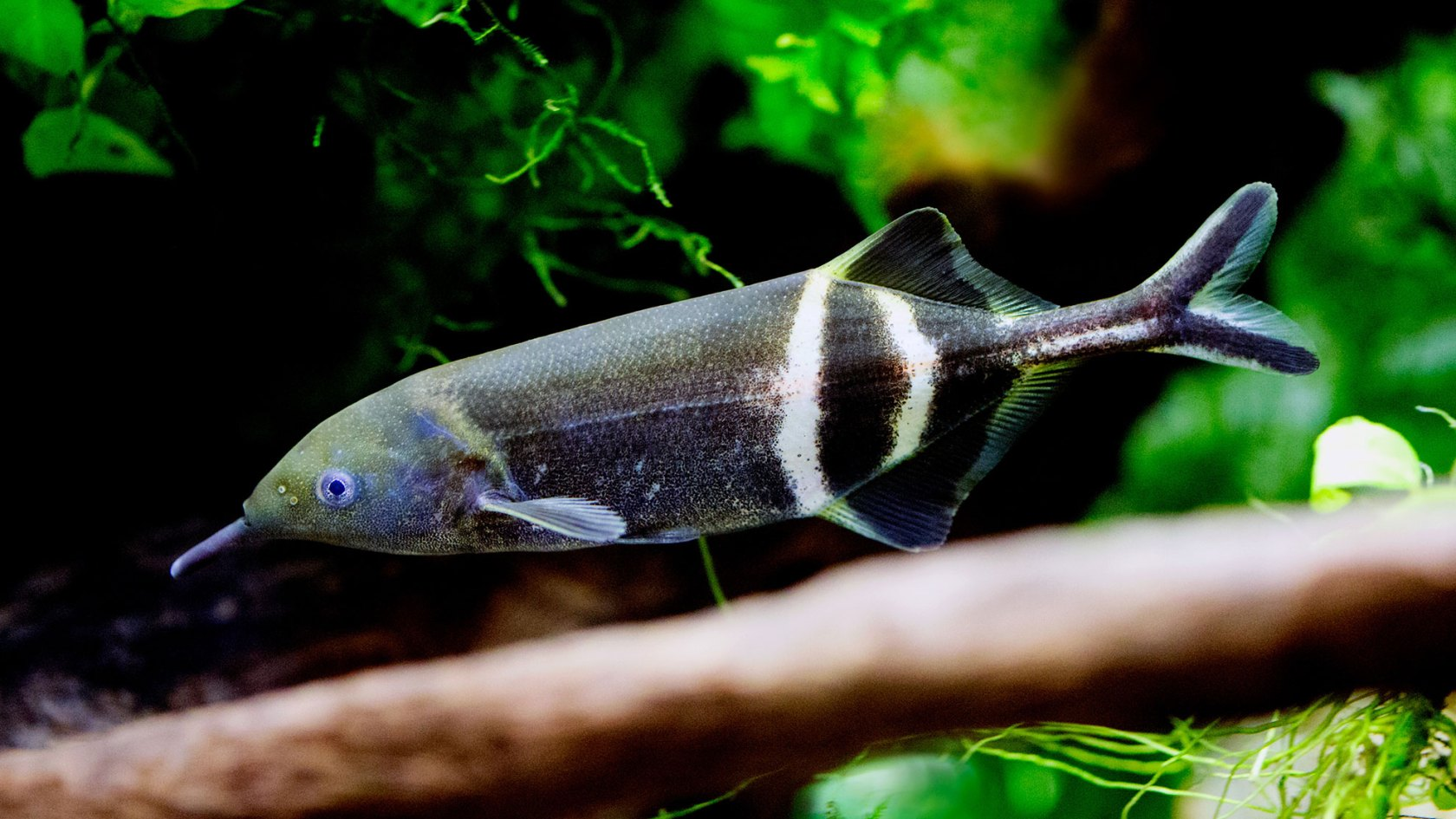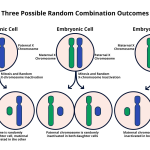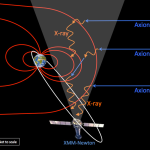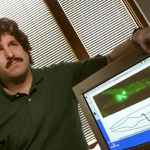Electric fish NeuroAI unveils fascinating insights into the world of biological electrocommunication, particularly through the behavior of species like the elephantnose fish. Researchers are delving into how these creatures utilize electric organ discharges to interact with their environment and each other, providing a unique model for understanding the principles of collective intelligence. The study of electric fish reveals intricate patterns of agent interaction that resemble multi-agent intelligence systems, engaging with concepts of AI communication. By analyzing their electrical pulse signaling, experts hope to shape the development of innovative AI systems that mimic these natural behaviors, leading to advancements in technology. The implications of this research extend beyond biology, potentially revolutionizing how artificial intelligence communicates and collaborates in future applications.
In exploring the remarkable capabilities of electric fish, particularly through their NeuroAI systems, we unlock a wealth of knowledge about natural communication strategies in aquatic environments. These fish, known for emitting electrical signals, provide a window into studying collective cognitive processes akin to multi-agent systems found in artificial intelligence. Their method of using electric organ discharges creates a fundamental language that enhances our understanding of agent interaction within complex biological networks. This exploration not only highlights the sophistication of these organisms but also paves the way for developing AI technologies that leverage similar communication tactics. As researchers delve deeper into the dynamics of electric fish, they continue to inform both ecological studies and advancements in AI communication protocols.
The Science of Electric Fish and Their Communication
Electric fish, such as the elephantnose fish, possess a remarkable ability to navigate and interact in their environments using electric organ discharges (EODs). These pulses not only help them perceive their surroundings but also serve as a fundamental communication tool among the species. By generating and interpreting electrical signals, these fish can convey different messages ranging from mating rituals to aggressive displays. This unique form of communication offers insights into the principles of information exchange in both natural and artificial intelligence systems.
The study of electric fish communication is critical for understanding collective intelligence, where the dynamics of interactions between individual agents result in complex group behaviors. By observing how these fish interact through their electric pulses, researchers can draw parallels to the communication patterns in humans and AI systems. As each fish influences others through its electrical signals, the concept of controlled agent interaction emerges — showcasing how simple signals can lead to intricate social dynamics.
Exploring NeuroAI through Electric Fish Behavior
NeuroAI is an exciting field that seeks to bridge insights from neuroscience with artificial intelligence. Electric fish, particularly their unique electrocommunication methods, provide a valuable model for examining how multi-agent intelligence develops. As researchers like Kanaka Rajan demonstrate, these fish exhibit remarkable capacities for collaboration and competition, mirroring the complexities found in human social systems. By studying these natural patterns, scientists can create algorithms that mimic these behaviors in artificial agents, enhancing the efficiency of AI communication and interaction.
The implications of understanding NeuroAI through the lens of electric fish are profound. By constructing computational models that simulate the behaviors of the elephantnose fish, researchers can explore how different environmental conditions influence collective behavior. These experiments not only inform us about the evolutionary strategies of these fish but also impart crucial lessons for developing AI systems that can adapt and communicate effectively in diverse contexts. Ultimately, insights gained from electric fish could inform future AI developments that closely align with the principles of natural systems.
Collective Intelligence: Lessons from Electric Fish
Collective intelligence in electric fish highlights how coordination among agents leads to survival benefits. For instance, when a group of elephantnose fish discovers food, they can communicate this through electric pulses, allowing others to quickly locate and exploit the resource. This phenomenon exemplifies how information sharing can enhance the efficiency of a group, reducing individual effort while maximizing collective success. Such dynamics are critical considerations in the design of multi-agent AI systems, where communication plays a key role in the collective performance of tasks.
The complexity of social interactions observed in electric fish underlines that collective behavior is often richer than mere aggregations of individual actions. Just as human behaviors are influenced by context and social dynamics, the electric fish exhibit task-oriented interactions that inform their collective strategies. Understanding these interactions can shed light on the emergence of cooperation within AI systems, vital for building smart technologies that rely on multiple agents working in concert to solve complex problems.
Agent Interaction: A Study of Electric Pulses
Agent interaction in electric fish serves as a model for exploring how communication can drive behavior in both natural and artificial systems. The consistent use of electric pulses by these fish creates a dynamic communication channel, where each signal conveys important information. Through their interactions, researchers can observe how individual behaviors converge into coordinated efforts, leading to survival advantages in their aquatic ecosystems. Such insights are crucial for understanding how multi-agent AI can be programmed to cooperate and adapt in response to each other.
By studying the complex patterns of electric pulse communication among elephantnose fish, scientists are equipped to design AI systems that learn from and mimic these natural interactions. This simulation of agent interaction not only provides foundational knowledge for AI development but also illustrates the potential for advanced machine communication strategies. Therefore, insights gained from electric fish behavior could pave the way for the next generation of AI that exhibits more nuanced and adaptable interactions akin to those found in nature.
Emerging Theories in Collective Intelligence Research
Current research into collective intelligence, as seen in electric fish, has the potential to transform our understanding of social dynamics and AI development. Studies have shown that collective behavior is not merely the sum of individual actions but rather emerges from the interplay of various factors, including historical context and communication styles. This nuanced understanding allows scientists to formulate theories that can explain how complex systems engage and adapt over time. The principles gathered from electric fish may help inform these theories, illustrating the interconnectedness of individual behaviors in driving group dynamics.
As scientists dive deeper into exploring collective intelligence through the behaviors of electric fish, new models are developed that reflect these emergent properties. The research possesses exciting implications not only for biological systems but also for artificial agents operating within social frameworks. By establishing foundational principles derived from natural intelligence, AI can better emulate group behaviors, resulting in more sophisticated interactions that enhance problem-solving capabilities across numerous applications.
The Significance of Electric Organ Discharges in AI Development
Electric organ discharges (EODs) in electric fish are not merely fascinating biological phenomena; they also hold significant implications for AI development. These signals represent a form of complex communication that can be analyzed to understand how information is processed and conveyed among different agents. By deciphering the patterns and structures within EOD signals, researchers can formulate algorithms that facilitate improved communication among AI systems. The lessons learned from these natural signals could be pivotal in creating more effective AI communication frameworks.
Understanding the anatomy and function of EODs enhances our knowledge of how biological systems achieve efficiency in communication. By modeling these electrical signals in artificial agents, developers can generate more responsive and adaptable AI networks. As applications for AI grow in complexity, adopting principles drawn from electric fish communication can lead to innovations that enhance not only inter-agent connectivity but also the collaborative capabilities of intelligent systems across various sectors.
AI Communication Inspired by Electric Fish
The study of electric fish opens up promising avenues for advancing AI communication. By adopting the principles observed in how these fish interact through electric pulses, we can create AI systems that operate in a similar collaborative framework. This could involve the development of algorithms that allow AI agents to ‘speak’ to one another, sharing information and strategizing in ways that mirror the communication styles of electric fish. This powerful analogy highlights the potential for growing intelligence through enhanced agent interaction.
Drawing from the dynamics of electric fish communication, researchers can implement cooperative strategies within AI algorithms. These strategies capitalize on the simplicity and efficiency of EODs, promoting a form of interaction where AI agents can coordinate actions dynamically based on real-time environmental feedback. By fostering this kind of adaptive communication process, AI systems can become more resilient and effective in problem-solving scenarios, particularly as they face increasingly complex challenges.
The Role of Electric Fish in Understanding Multi-Agent Intelligence
Electric fish, especially species like the elephantnose fish, serve as a crucial model for exploring multi-agent intelligence. Their innate ability to communicate through electric pulses creates opportunities for studying how multiple agents can work together and learn from each other. This natural intelligence offers insights that could be translated into AI systems designed to function in collaborative environments. Understanding how these fish process information and interact could guide the development of AI that can function effectively within a community of agents.
Examining the behaviors of electric fish in their natural habitat further emphasizes the importance of context and environmental factors in shaping interactions among agents. These insights can inform the design of AI systems that dynamically adapt their behavior based on both situational variables and agent interactions. By incorporating lessons from the collective behaviors of electric fish, researchers can pave the way for advanced AI systems that not only learn from individual experience but also thrive through collective collaboration.
Implications for the Future of AI: Collective Intelligence
The implications of studying collective intelligence through the lens of electric fish extend into the future of AI development. As researchers uncover the mechanisms behind effective agent communication in nature, they can apply these insights to designing AI systems that exhibit similar collaborative characteristics. This could lead to the emergence of AI networks capable of handling complex tasks more efficiently, thus transforming industries that rely on swift decision-making and adaptation.
The evolving understanding of how electric fish build collective intelligence has the potential to inspire innovative approaches in AI research. By harnessing the emerging principles of cooperation and communication found in natural systems, we can expect a future where AI operates not just as isolated entities but as coordinated teams. Such advancements could revolutionize the way technology interacts with humans and each other — leading to smarter, more responsive systems that harmonize with the complexities of real-world environments.
Frequently Asked Questions
What is the relationship between electric fish and NeuroAI?
Electric fish are crucial to NeuroAI research as they utilize electric organ discharges (EODs) for communication and navigation. Studying these fish helps scientists understand collective intelligence and multi-agent intelligence, providing insights into how different agents, including AI, can interact effectively.
How do electric fish demonstrate collective intelligence?
Electric fish, like the elephantnose fish, exhibit collective intelligence through coordinated communication using electric pulses. Their ability to share information about food sources showcases how agent interaction among these fish can lead to emergent behaviors similar to those seen in social human dynamics.
What are electric organ discharges and their significance in NeuroAI studies?
Electric organ discharges (EODs) are electric pulses emitted by weakly electric fish for communication. These discharges are significant in NeuroAI studies as they reveal how simple communication systems can lead to complex forms of collective intelligence and inform the development of AI communication protocols.
How does the study of electric fish assist in developing AI systems?
Research on electric fish, particularly their behavior and communication strategies, aids in developing AI systems by modeling collective intelligence. These insights reveal how groups of artificial agents can cooperate or compete, enhancing the design of multi-agent intelligence systems in technology applications.
What insights can be gained from electric fish regarding agent interaction?
Electric fish provide unique insights into agent interaction as they use simple, consistent signaling through EODs. By analyzing these interactions, researchers can better understand the dynamics of cooperation and competition among agents, which is crucial for improving AI communication and functionality.
Can electric fish be used to understand human social dynamics?
Yes, studying electric fish can help researchers uncover principles of collective intelligence that apply to human social dynamics. The complexity of interactions in groups of electric fish mirrors social behavior in humans, potentially revealing universal laws governing cooperation and competition.
What implications do electric fish have for the future of AI communication?
The study of electric fish and their electric organ discharges can inform future AI communication by providing frameworks for how individual AI agents can effectively collaborate and share information. Understanding these principles can lead to the development of more sophisticated, adaptive AI systems capable of collective problem-solving.
How does natural selection explain the behaviors of electric fish in artificial intelligence studies?
In artificial intelligence studies that model electric fish, natural selection explains behaviors like cooperation and competition as they emerge over generations. By simulating different environmental conditions, researchers can observe how these behaviors evolve, thereby informing the design of resilient AI systems that adapt over time.
| Key Points | Details |
|---|---|
| Electric Fish Importance | Electric fish, like the elephantnose fish, offer insights into collective intelligence and agent interactions. |
| Study Focus | Research conducted by Kanaka Rajan at Harvard focuses on how these fish communicate through electric pulses and how this can inform NeuroAI. |
| Social Dynamics | Study reveals that social behaviors in groups are more complex than individual interactions. |
| Collective Intelligence | Elephantnose fish exhibit behaviors like food-sharing based on communication, which can inform AI interactions. |
| AI Modeling | Computer models simulate interactions of artificial agents that mimic elephantnose fish to study collective behaviors. |
| Evolutionary Simulations | Research indicates food availability influences cooperation versus competition among agents in simulations. |
| Applications | Understanding collective intelligence principles is essential for developing advanced AI systems and cooperation strategies. |
Summary
Electric fish NeuroAI presents a fascinating intersection of biology and artificial intelligence, where the study of electric fish like the elephantnose fish can significantly contribute to our understanding of collective intelligence. By examining how these creatures communicate and cooperate through electrical signals, researchers aim to uncover foundational principles that can enhance AI systems. As we delve deeper into the dynamics of social interactions and agent behaviors, the insights gained from electric fish could lead to smarter, more adaptable AI capable of solving complex problems through collaboration.








